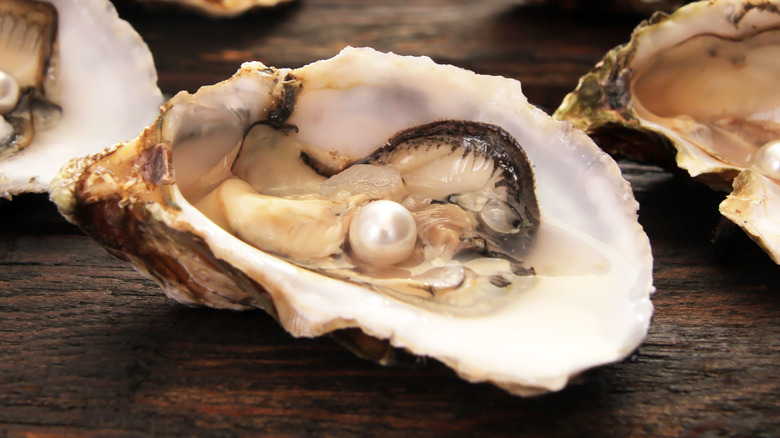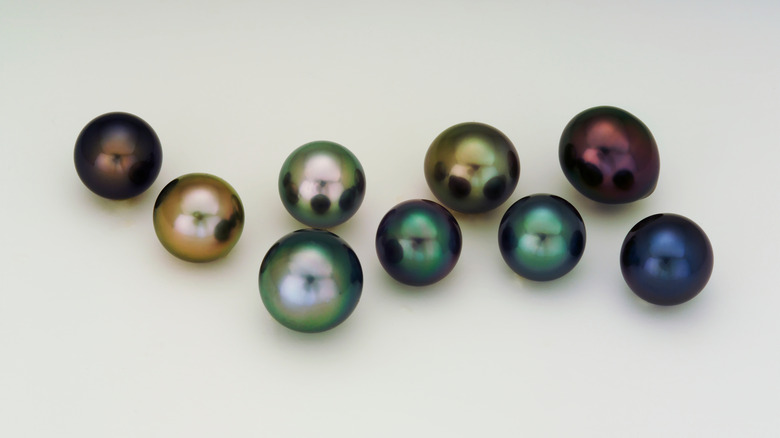How Oysters Make Pearls And Why Some Are Different Colors
For at least 164,000 years, oysters have been part of the human diet, but people have been finding pearls in oysters for much longer — as early as 2300 BC when Chinese royalty received them as gifts. Only oysters of the Ostreidae family can make pearls, but many other types of mollusks can produce these gems, such as abalone and paua (New Zealand abalone), conchs, freshwater mussels, pen shells, and whelks. More interesting, perhaps, is the biological process that occurs for the pearls to form.
When debris gets trapped in between the shells of an oyster or other mollusk, or when the animal sustains an injury, the animal's mantle (a large organ on its back) excretes aragonite, a carbon-based mineral, and organic material from the inner layer under the surface of its shell in thousands of layers. These layers are very thin and meld together like brick and mortar to create nacre or mother-of-pearl, creating a strong protective coating that looks iridescent and smooth. Producing a 3 to 5 millimeter nacreous pearl through this process takes at least two years.
Most of the pearls available to buy have been cultured or farmed, which means that people insert little shell beads or donor animal cells into oysters or other mollusks to stimulate the pearl-making process. Finding pearls from wild oysters is actually really rare — only about one in 10,000.
Why some pearls are different colors
When you first think of pearls, a milky white is likely the first one that you visualize because it's the classic shade used in jewelry. However, both natural and cultured pearls come in various colors of the rainbow — from white to black — including blue, green, orange, pink, and yellow. The main factor that determines the color of pearls is the shade of the oyster shells. For instance, black-lipped oysters are known for producing the black, gray, and purple shades of Tahitian pearls, while gold-lip oysters found in warm waters are known for making golden pearls.
Another major factor that affects pearl color is the thickness and quality of the nacre or "mother of pearl." The amount of light that bounces through the brick-wall pattern of the nacre layers, which occurs at a sub-microscopic creates a color filter that changes the appearance of pearls to the naked eye. Meanwhile, these animals live in aquatic habitats that have varying levels of nutrients and other elements that can impact the nacre and resulting colors. When it comes to cultured pearls, farmers and scientists are still trying to find ways to influence the shades but believe that the inserted irritant may make a difference, too.

